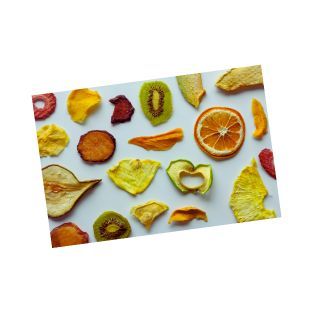🍓🌽🥩 Preserving the Goodness: Savor Nature's Bounty All Year Round!
In a world where fresh produce and perishable foods are not always readily available, food preservation techniques have played a vital role in ensuring that we can savor the flavors of nature all year round.
From canning and freezing to drying and fermenting, there are various methods that help us extend the shelf life of our favorite fruits, vegetables, meats, and more.
Join us as we delve into the fascinating world of food preservation, exploring the ancient wisdom and modern innovations that allow us to enjoy the delights of nature's bounty long after their harvest.
Get ready to discover the secrets that keep our taste buds satisfied and our pantries stocked with goodness! 🌽🍓🧀
What is Food Preservation?
Food preservation refers to the process of keeping food fresh and safe to consume for a longer period of time. It involves various techniques that slow down the growth of bacteria, yeast, and molds, as well as inhibit enzymatic reactions that cause spoilage.
The Types
Food preservation methods can be categorized into several types, including:
Canning: This method involves sealing food in jars or cans and then heating them to destroy microorganisms.
*The sealed containers prevent the entry of air and subsequent spoilage.
Freezing: Freezing is a common method of food preservation that involves lowering the temperature of food to below freezing point, which slows down the growth of microorganisms and enzymes.
*It helps to maintain the nutritional value and texture of the food.
Drying: Drying removes moisture from food, inhibiting the growth of microorganisms.

*Methods like sun drying, air drying, and dehydrating machines are used to remove moisture and extend the shelf life of various foods.
Fermentation: Fermentation is a natural preservation technique that involves the conversion of sugars in food into alcohol, acids, or gases by microorganisms such as yeast or bacteria.
*Examples include sauerkraut, yogurt, and pickles.
Salting: Salt acts as a preservative by drawing out moisture from food, making it inhospitable for bacterial growth.
*It is commonly used to preserve meat, fish, and vegetables.
Smoking: Smoking involves exposing food to smoke from burning wood or other plant materials.
*The smoke contains antimicrobial properties and helps to preserve the food by inhibiting the growth of bacteria.
These methods have been used for centuries to ensure that food remains safe to eat, even during times of scarcity or when fresh produce is not readily available.
On Shelf Life
The average shelf life of food preserved using different methods can vary depending on various factors such as the type of food, storage conditions, and the specific preservation technique employed. 🍅🍏🧀
Here is a general guideline for the average shelf life of food preserved using the six methods mentioned:
Canning: Properly canned foods can have an average shelf life ranging from 1 to 5 years, depending on the type of food and the method used.
*Low-acid foods like meat and vegetables can last longer than high-acid foods like fruits.
Freezing: When stored at 0°F (-18°C) or below, frozen food can typically remain safe for consumption for an extended period.
*However, the quality of frozen food may deteriorate over time, so it's recommended to consume it within 6 to 12 months for optimal taste and texture.
Drying: Dehydrated foods can have a shelf life of several months to a few years, depending on the moisture content and storage conditions.

*Properly dried foods like jerky, dried fruits, and herbs can last anywhere from 6 months to 2 years or even more.
Fermentation: Fermented foods can have a relatively long shelf life due to the presence of beneficial bacteria and acids that act as natural preservatives.
*Depending on the specific fermented food, such as sauerkraut, kimchi, or yogurt, they can last from a few weeks to several months when stored in appropriate conditions.
Salting: Foods preserved through salting, such as cured meats or salted fish, can have a shelf life of several months to a year or more, depending on the salt concentration and storage conditions.
*The high salt content inhibits the growth of bacteria and extends the shelf life.
Smoking: Properly smoked foods, like smoked fish or meat, can have a shelf life of several weeks to several months, again depending on storage conditions.
*The smoke acts as a natural preservative, inhibiting bacterial growth and extending the shelf life.
It's important to note that these are general estimates and actual shelf life may vary based on individual circumstances. Proper storage, including maintaining proper temperature and moisture levels, is essential for maximizing the shelf life of preserved foods.
Frequently Asked Questions about Food Preservation:
Q: Can I preserve fresh fruits and vegetables without using any special equipment?
A: Absolutely! There are several simple and accessible methods for preserving fresh produce without any specialized equipment.
These include refrigeration, freezing, canning using a hot water bath method, and even drying fruits and vegetables in the sun or an oven.
Q: How can I ensure the safety and quality of canned foods?
A: Safety and quality are crucial when it comes to canned foods. To ensure both, it's essential to follow proper canning techniques, such as using sterilized jars, adding appropriate amounts of acid or sugar for preservation, and achieving a proper seal.
It's also recommended to follow tested recipes from reputable sources and regularly check for signs of spoilage before consuming canned foods.
Q: What is the difference between fermentation and pickling?
A: Fermentation and pickling are two distinct food preservation methods.
Fermentation involves the transformation of sugars into acids, gases, or alcohol by microorganisms, which helps preserve the food.
On the other hand, pickling involves preserving food in a solution of vinegar or brine, often with additional herbs and spices for flavor. Both methods offer unique taste profiles and preservation benefits.
Q: Can I freeze any type of food for long-term preservation?
A: While freezing is a popular preservation method, not all foods freeze well for long periods.
Some foods, like fresh fruits and vegetables, can be frozen but may experience changes in texture after thawing.
However, many cooked dishes, soups, stews, and baked goods can be successfully frozen and enjoyed later with minimal loss in quality.
Q: How do I know if preserved food has gone bad?
A: It's important to inspect preserved food before consumption.
Signs of spoilage can include mold growth, off odors, unusual colors, sliminess, or an abnormal texture.
If any of these signs are present, it's advisable to discard the food to avoid potential foodborne illnesses. When in doubt, trust your senses and prioritize safety over taste.
Fun & Interesting Facts
These fun facts highlight the rich history, cultural significance, and technological advancements associated with food preservation.
- Food Preservation Dates Back Thousands of Years: Food preservation has been practiced for thousands of years. Ancient civilizations used various techniques such as drying, smoking, pickling, and fermenting to ensure food availability during lean times and for long journeys.
- Spices Were Used as Natural Preservatives: Before modern refrigeration, spices played a crucial role in food preservation. The antimicrobial properties of spices like cinnamon, cloves, and black pepper helped inhibit the growth of bacteria, making them effective natural preservatives.
- Napoleon Bonaparte Encouraged Food Preservation: Napoleon Bonaparte, the French military and political leader, sought a way to solve the problem of spoilage in food supplies for his armies. He offered a cash prize to anyone who could develop an effective method for food preservation – leading to the invention of canning by Nicolas Appert.
- The World's Oldest Known Pickle: In 1999, archaeologists discovered a jar containing the world's oldest pickles in Egypt. The pickles were estimated to be over 4,000 years old! This finding shows the long history and enduring appeal of pickling as a preservation method.
- NASA Contributed to Food Preservation Advancements: As part of their space missions, NASA researchers made significant contributions to food preservation. They developed freeze-drying techniques that removed moisture from food while preserving its nutritional value. These advancements have since been adopted and applied in various industries, including military rations and emergency food supplies.
The Takeaway
Summing up, food preservation is a fascinating and essential practice that allows us to prolong the shelf life of perishable foods, minimize waste, and maintain their nutritional value.
From ancient preservation techniques to modern innovations, humans have continuously sought ways to ensure food availability and safety ... Whether it's canning, freezing, drying, fermenting, salting, or smoking, each method offers unique benefits and flavors.
Your Next Move
By exploring the art of food preservation, we not only gain a deeper appreciation for our culinary heritage but also contribute to a sustainable and resilient food system.
So, let's embrace the diverse world of food preservation and embark on a journey of preserving flavors, traditions, and memories one delicious bite at a time. 🍅🍏🧀
Disclaimer. When you purchase through links on our site, we may earn an affiliate commission (that's how we stay in business). FirstFewFinds may use affiliate links to products and services on retailer sites for which we can receive compensation if you click on those links or make purchases through them. We hope you find the list of our first few finds useful and helpful. Each product on our list has been carefully chosen by our writers and all opinions are our own. Check your choices and enjoy finding exactly what you need!








